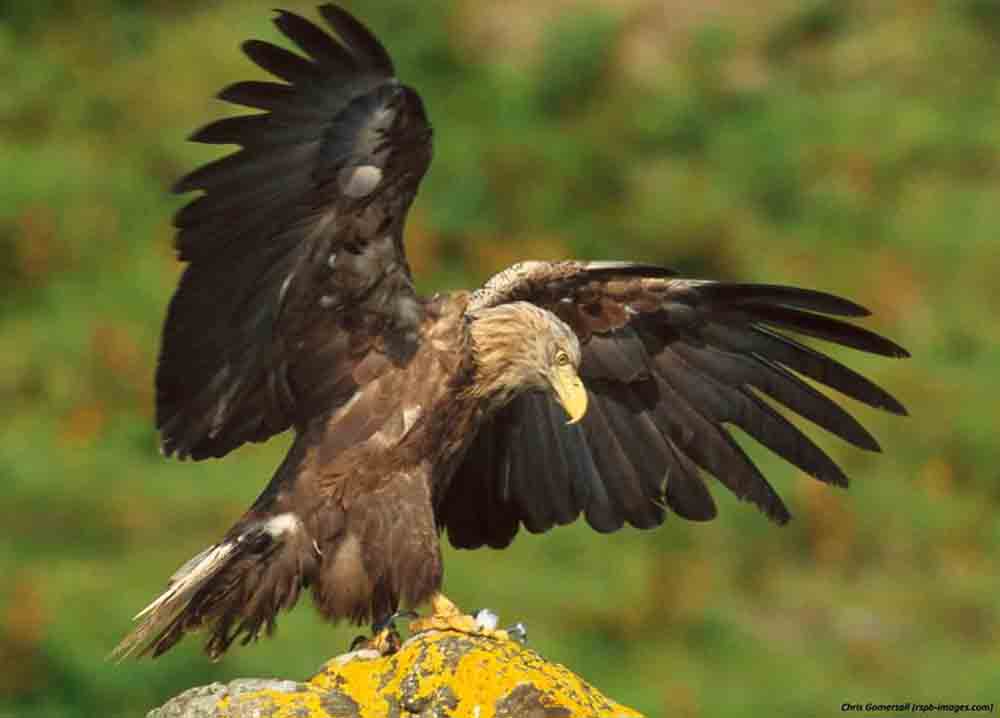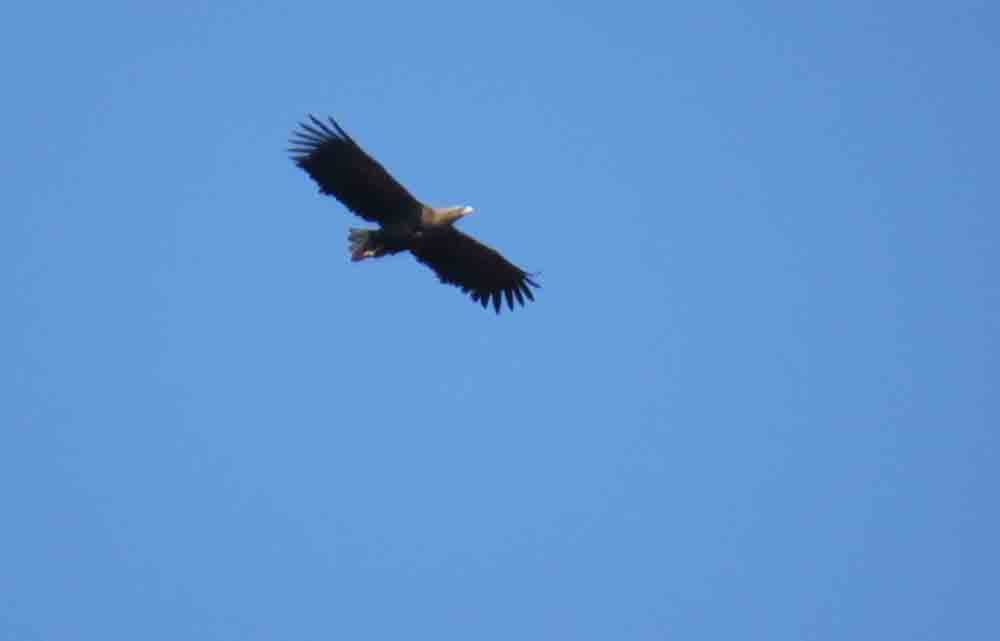A PAIR of sea eagles in Orkney are raising hopes they could produce the first chicks in almost 150 years for the island.
The young lovebirds are currently preparing to nest at a the Hoy nature reserve and are thought to be the same couple that nested there last year.
This was the first breeding attempt seen in the country since 1873 but hopes were soon dashed when their eggs were found to be infertile.
But now bird experts believe that due to the birds increased maturity and experience from last year, this could be the year that makes history.
Alan Leitch, RSPB Scotland’s Sites Manager in Orkney, said: “It’s very exciting to see Hoy’s sea eagles back on the cliffs.
“It’s been quite a journey from their national extinction in 1918 to seeing these birds soaring over Orkney’s hills and coasts again, and with luck we may all witness the next step in their story this year.”
Sea eagles have a long history in Orkney where a Pictish symbol stone was found at the Knowe of Burrian, Harray featuring a well-known carving of one bird.
Bones of the birds have also been discovered in burial cairns in the islands, most notably at the Tomb of the Eagles in South Ronaldsay.
Leitch added: “With a wingspan of 2.4 m, or 8 feet, sea eagles are one of the most magnificent birds you can hope to experience in Orkney.
“We’re looking forward to helping people spot this pair at an informal watchpoint at the small roadside car park for the Dwarfie Stone, opposite the Dwarfie Hamars, the cliffs where the birds have recently been seen displaying.
“To give these birds the best chance of success, please don’t approach the cliffs and keep dogs under very close control in the vicinity.
“There’s no problem with visiting the Dwarfie Stone, but to be on the safe side we would recommend not lingering too long or gathering in large groups there – the best views are to be had from the car park in any case.
“Nesting sea eagles are specially protected by law, so if you see any signs of disturbance please pass your concerns onto the police straightaway.”
Sea eagles became extinct across the UK in the early 19th century due to a combination of widespread habitat loss and human persecution.
The last bird in Britain is thought to have been shot and killed in Shetland in 1918.
A process of reintroduction began in the late 1960s – initially on the west coast and islands, and more recently on Scotland’s east coast.
If the current sea eagles, who returned to Orkney of their own accord, are successful this could represent a significant expansion in breeding for the birds of Scotland.



